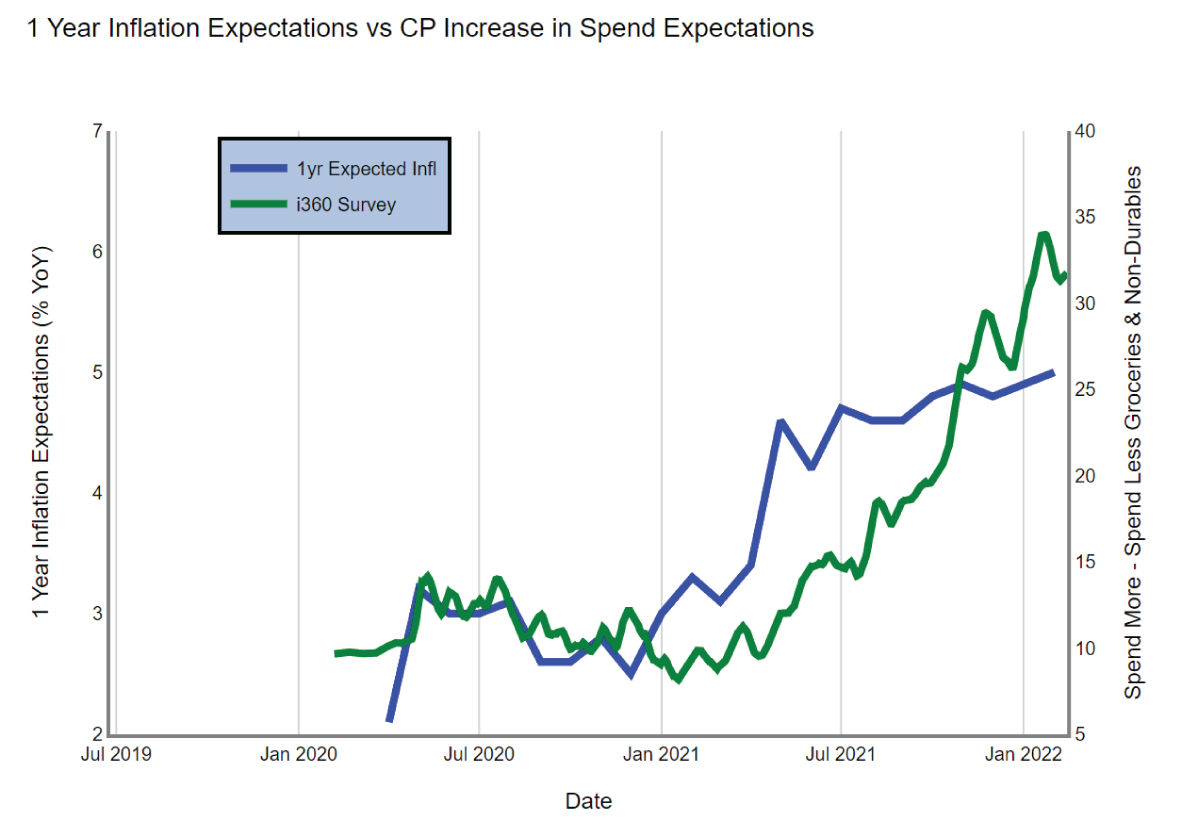Do you expect to spend more or less?

About i360’s Consumer Pulse: The Consumer Pulse asks 1,000, of the 2.5 million US adult panelists, over 150 questions daily. Questions center around key topics such as economy, lifestyle, real estate, automotive, shopping, employment, political opinions, and more.
SETTING INFLATION EXPECTATIONS WITH i360
Last week, US inflation reached a four-decade high accelerating to a 7.5% annual rate, and consumers are noticing. Historically, rising inflation tends to drive inflation expectations, which continues to increase actual inflation. This cycle has ripple effects throughout the business sector, including worker demands to increase wages, and rising business prices. This cycle is a difficult to break. Several of i360’s survey questions from the Consumer Pulse have shown clear signaling that inflation expectations amongst US consumers are rising. With a longitudinal daily survey on i360’s proprietary online panel of 2 million US consumers, our data provides C-Suite Executives, Policy Makers, and Investors, the leading insights they need to make informed decisions.
Across various categories, i360 asks: “Over the next year, do you expect to spend more or less than you currently do on the following categories?” Looking at survey responses from panelists on spending expectations across groceries and household items, but excluding more volatile items like housing and fuel, i360 measured the change in price expectations of our panelists. The plotted chart below shows i360’s real time inflation expectations are rising and closely predict the Expected Change in Inflation Rates in one year’s time.
To gain a deeper insight into survey responses, i360 data also looks at demographics where trends are most acute, such as gender, income bracket, geography, and education.

Disclosure: The information in these blog posts, based on i360’s Consumer Pulse, is for informational purposes only and should not be construed as investment advice on any matter.

